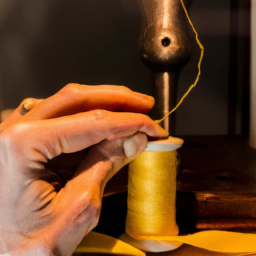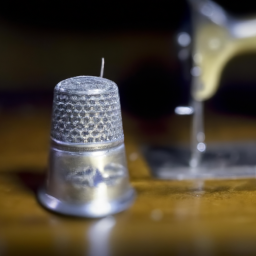
?
The invention of the sewing/” title=”Stitching Stories: A Beginner's Guide to Sewing”>sewing machine revolutionized the textile industry, making the process of stitching fabrics much faster and efficient. Let’s delve into the fascinating history of this marvelous invention!
The First Patent
The origins of the sewing machine can be traced back to the late 18th century. In 1790, an English inventor named Thomas Saint obtained the first patent for a design of a sewing machine. His machine was intended for stitching leather and canvas, and although there is no evidence that his invention was ever built, it laid the groundwork for future developments.

Thomas Saint’s patent drawing
Buttonhole Stitching and Automatic Feed
It wasn’t until the early 19th century that significant progress was made in sewing machine design. In 1829, French tailor Barthelemy Thimonnier patented a machine capable of sewing straight seams and producing a chain stitch. His device used a hooked needle and a single thread, marking the first practical application of the sewing machine.
The Rise of the Lockstitch
In 1846, Elias Howe, an American inventor, patented the first practical and efficient lockstitch sewing machine. His machine utilized two threads, one from above and one from below the fabric, producing a strong and reliable stitch. This innovation paved the way for the widespread adoption of sewing machines in various industries.

Elias Howe’s sewing machine
Mass Production and Modern Innovations
In the late 19th and early 20th centuries, sewing machines evolved rapidly with the introduction of mechanical advancements. The sewing machine became a staple in households, and companies like Singer, founded by Isaac Merritt Singer, played a crucial role in popularizing and mass-producing sewing machines.
- Electric sewing machines were introduced in the late 1880s, eliminating the need for manual foot operation.
- The emergence of computerized sewing machines in the 20th century revolutionized the industry, offering advanced features and programmable stitching options.
- Today, sewing machines continue to evolve, integrating cutting-edge technology, such as touch screens, automated embroidery, and precise stitching capabilities.
In Conclusion
The history of the sewing machine reflects remarkable innovation and dedication. From humble beginnings to the modern marvels we see today, sewing machines have transformed the textile industry and enabled countless individuals to express their creativity through sewing. Armed with the knowledge of its history, we can appreciate the significance of this remarkable invention that revolutionized the way we stitch fabric.

Modern sewing machine




